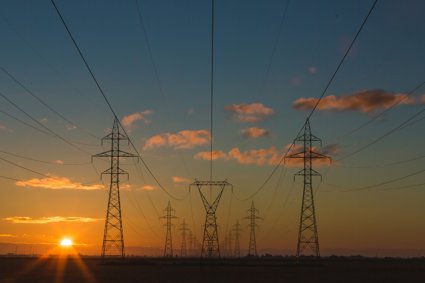
Lesson three: Practical task
Key question:
How is energy used in your school?
Aim:
- A closer look at what can be done in your own school to explore the energy that is used and link that to the bigger picture
Starter
What will future energy security be?
What are the implications of the energy changes that you have been exploring in previous lessons?
-
How realistic do you think this might be?
-
What impacts were mentioned that you hadn’t thought about?
Main Activity
Fieldwork on the school site
This lesson involves a closer look at what can be done in your own school to explore the energy that is used and link that to the bigger picture.
But how does this link to Ralitsa’s research?
Ralitsa carried out fieldwork in a number of locations, most of which involved semi-structured interviews in locations that were linked to energy production and energy policy. Unlike the fieldwork in the Arctic featured in the ocean acidification ‘From the Field’ resource, Ralitsa has not been dealing with large amounts of statistical data. Countries are required to look at their energy budgets, and plan for how they are going to be spent. A large part of a school’s budget is spent on staffing, but there will also be a significant investment in energy costs.
You need to plan a walk around the school campus which takes in some of the energy uses that are taking place. You should mark these on a map. You will need a blank map of the campus, which is likely to be available from the school office.
An external view of the building could be used and digital cameras to identify potential locations of relevance would be a useful addition. You might also want to leave post-its or other messages to suggest changes to other visitors.
The aim of the energy walk is to report back on energy use and make suggestions for reducing the usage of energy. The term ‘sustainability’ is used frequently in this context.
What could be done to make your school a more sustainable place as far as energy was concerned?
Produce a presentation using an appropriate format to report your findings and recommendations. This might include Windows Movie Maker, Powerpoint or Keynote, Prezi or a poster.
A high quality OS map of the campus will be available if your school has a Digimap subscription. You can also obtain a map from the OS Get-a-Map service.
You might want to print off the energy detective badges that have been provided and hand them to students to wear while they are carrying out the activity in case they are questioned by other members of staff, or pupils.
These badges were made with this Badge Maker - you can make badges for other fieldwork activities that you might be planning for GCSE.
You should make contact with a member of the school leadership team, ideally the Headteacher or Principal, or alternatively a member of the Governing body who has some responsibility for the premises, and ask them to come in and see your presentations. You might view them first as a group and choose two or three which will be used on this occasion as a group decision.
Plenary
Prepare for ‘hot seat’ style activity.
One of the reasons that Ralitsa focused on energy is that the subject is going to remain important during her (and your) lifetime.
Think ahead.
You are going to interview your 50 year old self about the future as far as energy and related areas are concerned. Think about the possible consequences of some of our current usages of energy.
Prepare some questions that you would want to ask Ralitsa if she came into your classroom.
It may be worth putting this additional effort in exploring energy usage to good use by thinking about collecting evidence to submit for an EcoSchools award.
Finally, do you think you could go for a day without turning anything on (and you are not allowed to get someone else to do it for you either)?
